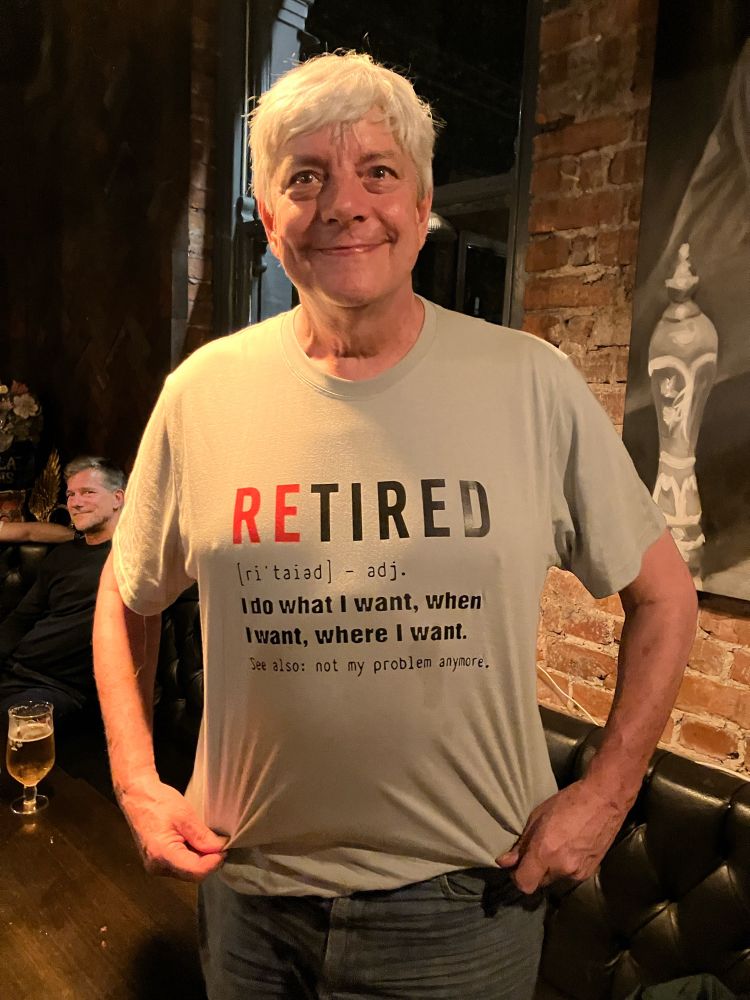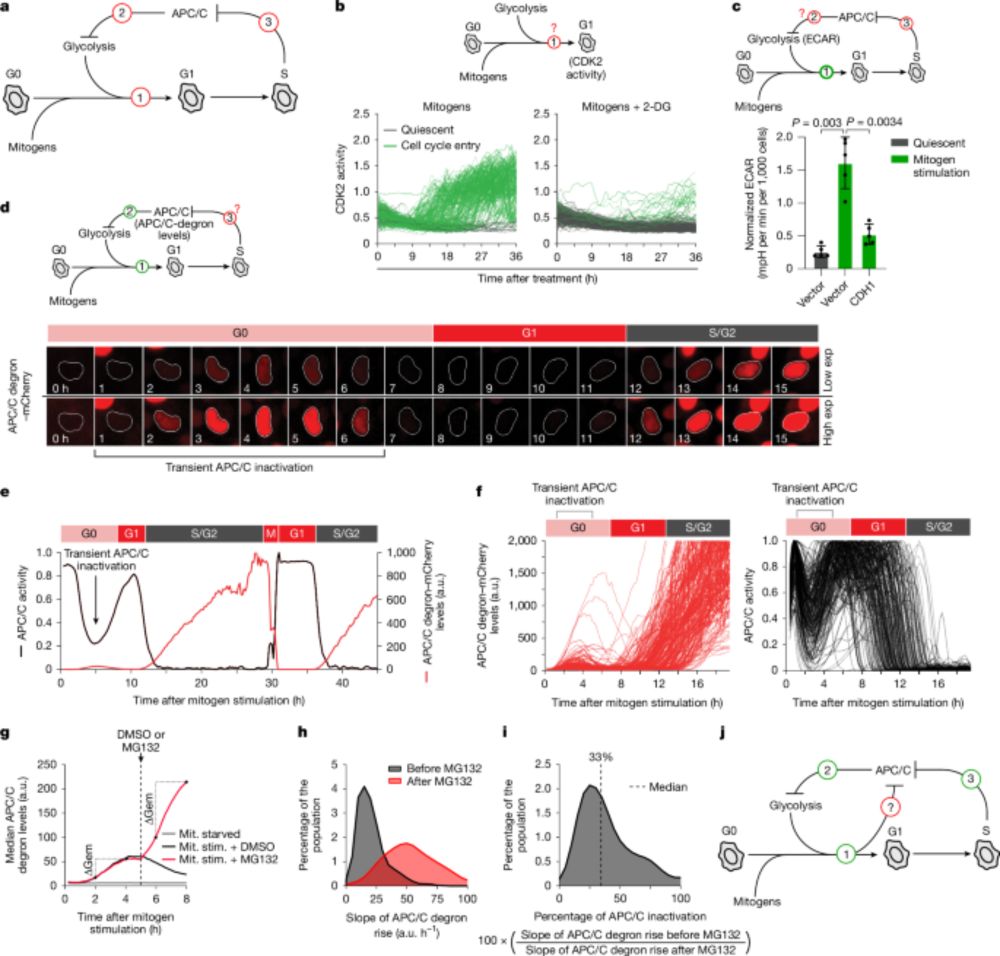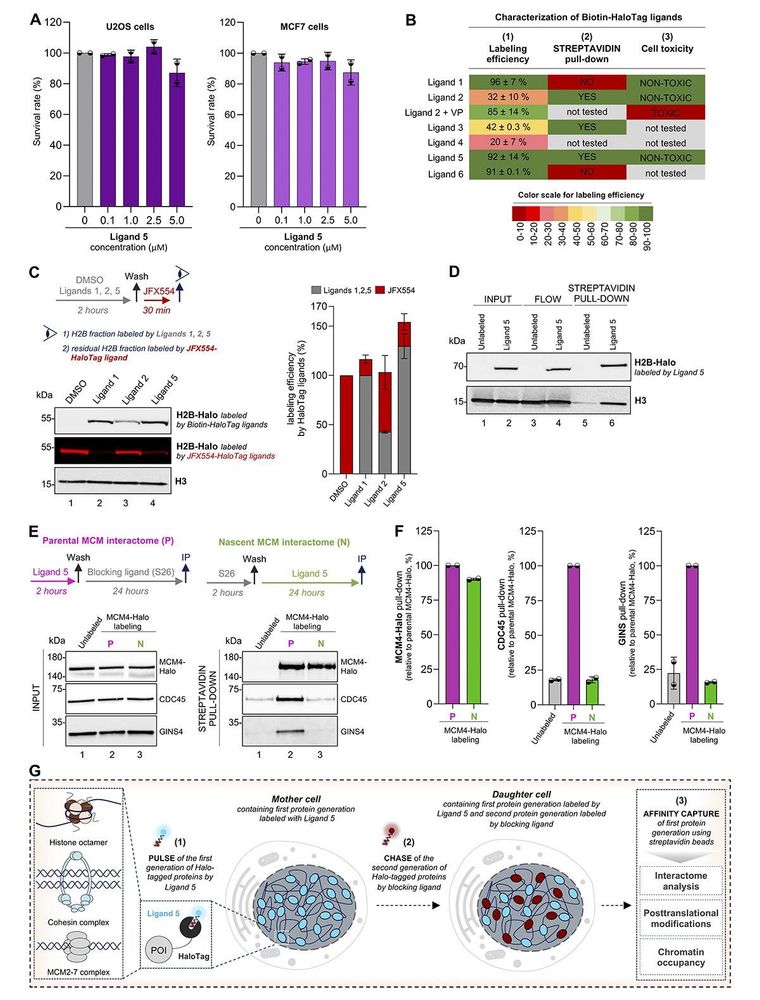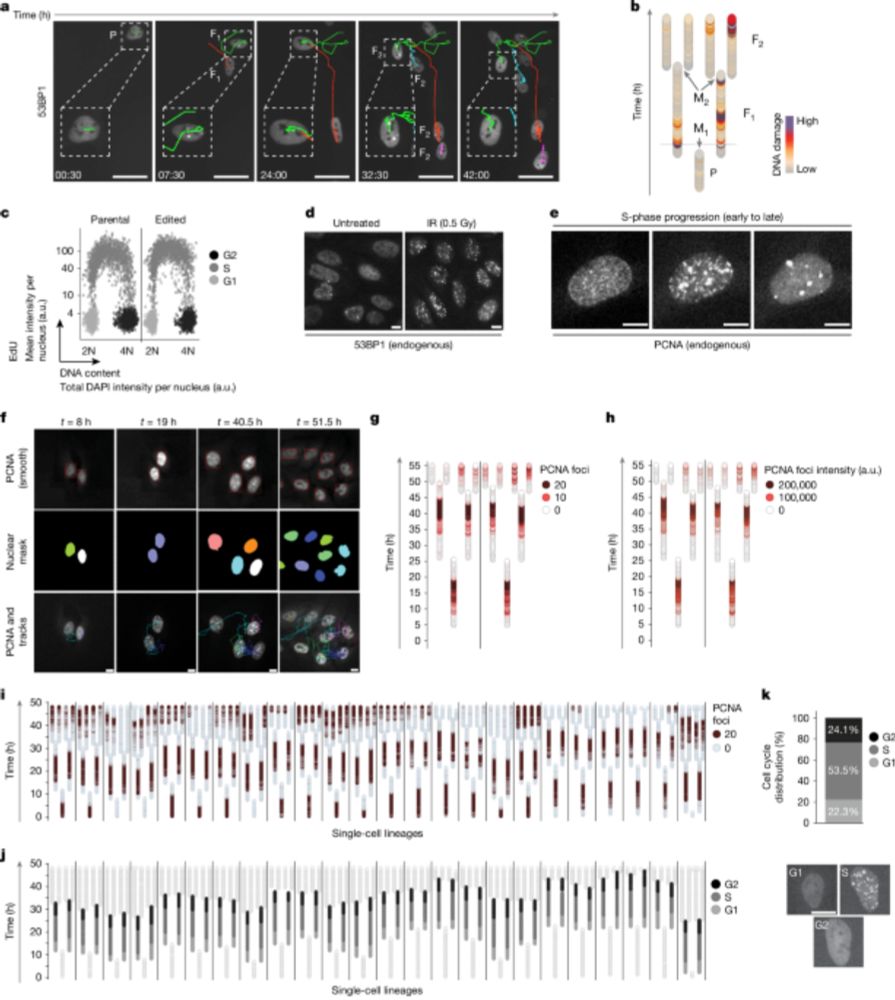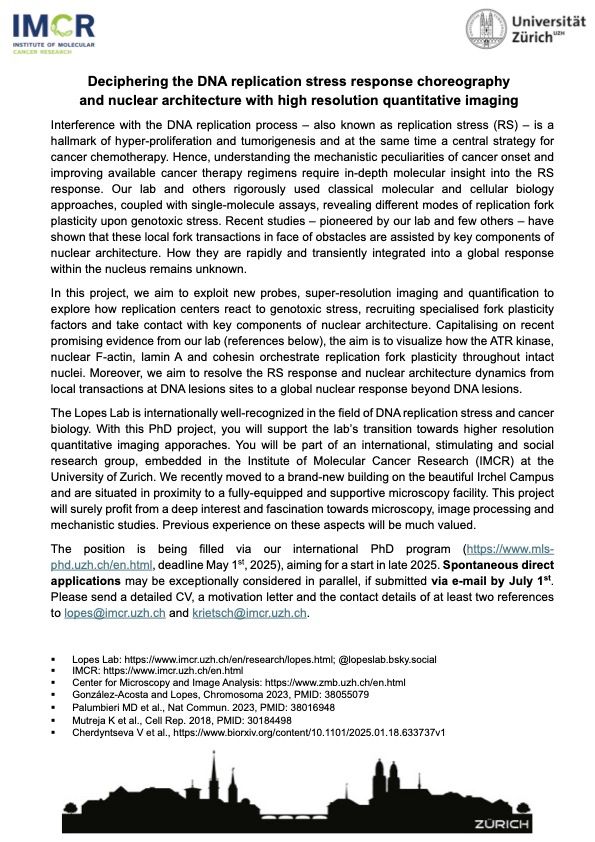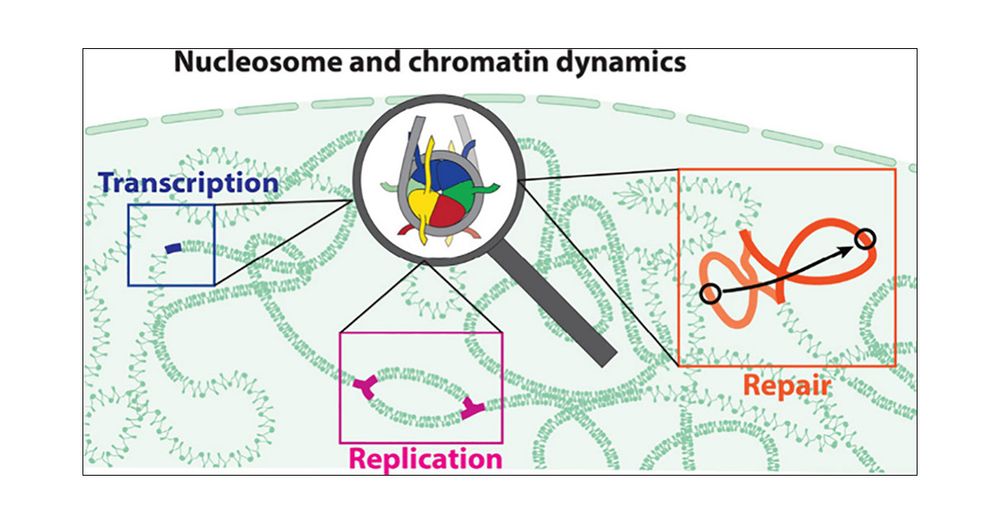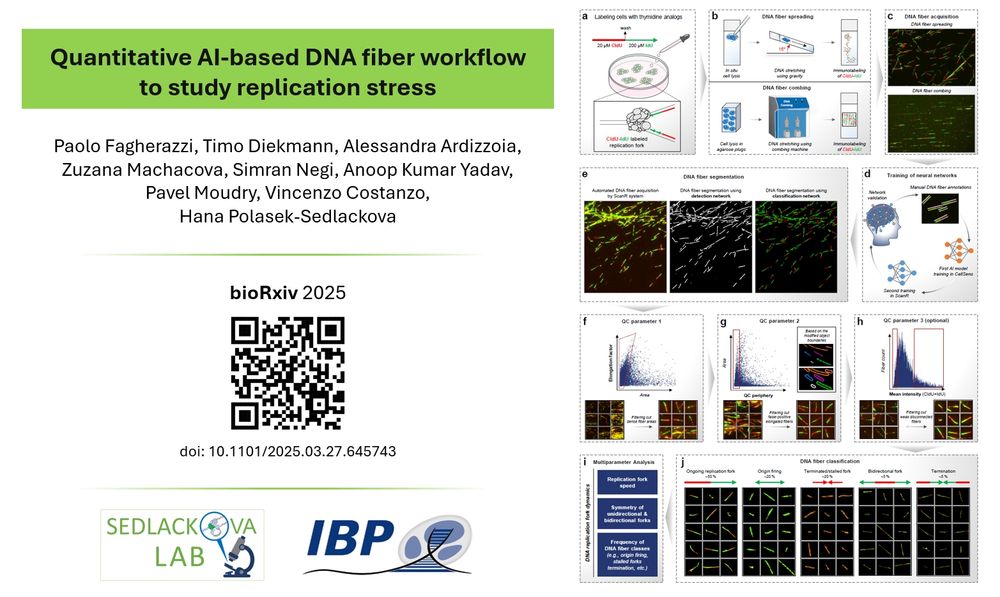Kumar Somyajit & Lab
@ksomyajit.bsky.social
480 followers
400 following
15 posts
Associate Professor @University of Southern Denmark, Odense, Denmark
Genome-and Cell cycle-surveillance in (patho)physiology
Posts
Media
Videos
Starter Packs
Reposted by Kumar Somyajit & Lab
Uli Rass
@u-rass.bsky.social
· Sep 3

DNA2 enables growth by restricting recombination-restarted replication - Nature
DNA2 suppresses recombination-restarted replication and checkpoint activation at stalled forks, and its loss triggers recombination-dependent synthesis, checkpoint signalling and cell-cycle exit, high...
www.nature.com
Reposted by Kumar Somyajit & Lab
Reposted by Kumar Somyajit & Lab
Reposted by Kumar Somyajit & Lab
Reposted by Kumar Somyajit & Lab
Reposted by Kumar Somyajit & Lab
Reposted by Kumar Somyajit & Lab
Ellenberg Lab
@ellenberglab.bsky.social
· Jul 21
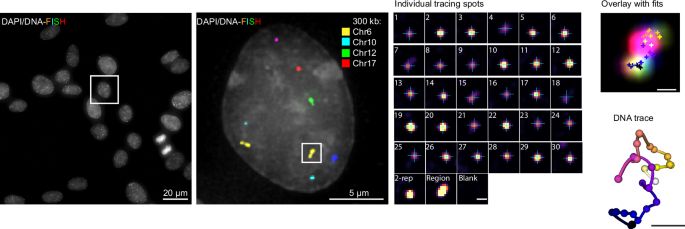
Nanoscale 3D DNA tracing in non-denatured cells resolves the Cohesin-dependent loop architecture of the genome in situ - Nature Communications
A nanoscale 3D DNA tracing workflow visualizes Cohesin-dependent loops in single, structurally well-preserved cells. Computer simulations based on the tracing data give further insight into how Cohesi...
www.nature.com
Reposted by Kumar Somyajit & Lab
Barbara Marte
@barbmarte.bsky.social
· Jun 26
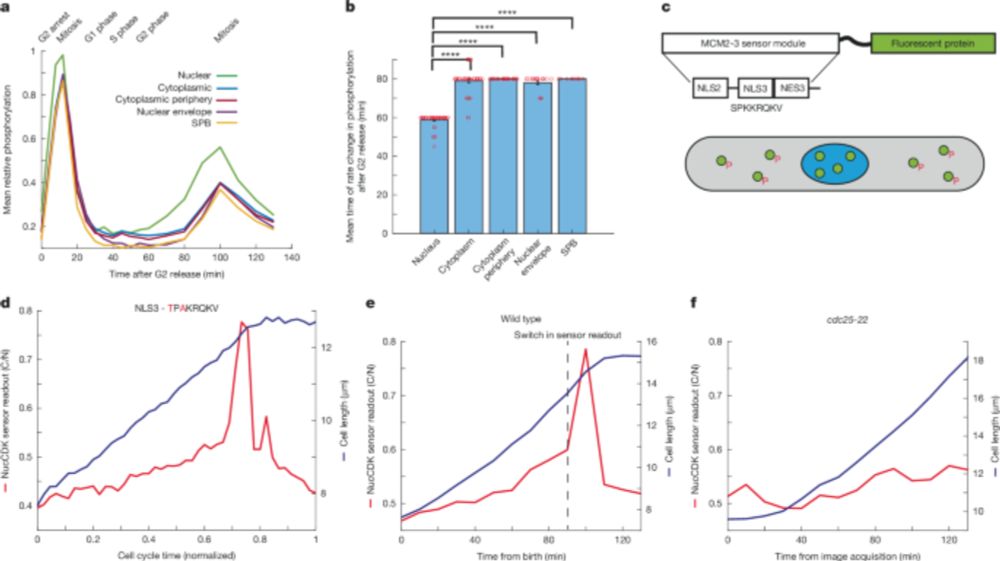
Spatiotemporal orchestration of mitosis by cyclin-dependent kinase - Nature
Experiments in fission yeast show that cyclin-dependent kinase is first activated in the nucleus, from which the mitotic signal is propagated from CDK at the centrosome to the cytoplasm.
www.nature.com
Reposted by Kumar Somyajit & Lab
Reposted by Kumar Somyajit & Lab
Reposted by Kumar Somyajit & Lab
Grant Stewart
@profstewartlab.bsky.social
· May 14

Inherited deficiency of DIAPH1 identifies a DNA double strand break repair pathway regulated by γ-actin - Nature Communications
DNA double strand break repair pathways ensure genome stability and prevent disease. Here the authors show that the actin nucleating factor DIAPH1 and γ-actin promote homologous recombination (HR)-dep...
www.nature.com
Reposted by Kumar Somyajit & Lab
Reposted by Kumar Somyajit & Lab
Reposted by Kumar Somyajit & Lab
Reposted by Kumar Somyajit & Lab
Reposted by Kumar Somyajit & Lab
Barbara Marte
@barbmarte.bsky.social
· Apr 15
Reposted by Kumar Somyajit & Lab
Rémi Buisson
@buissonlab.bsky.social
· Apr 11
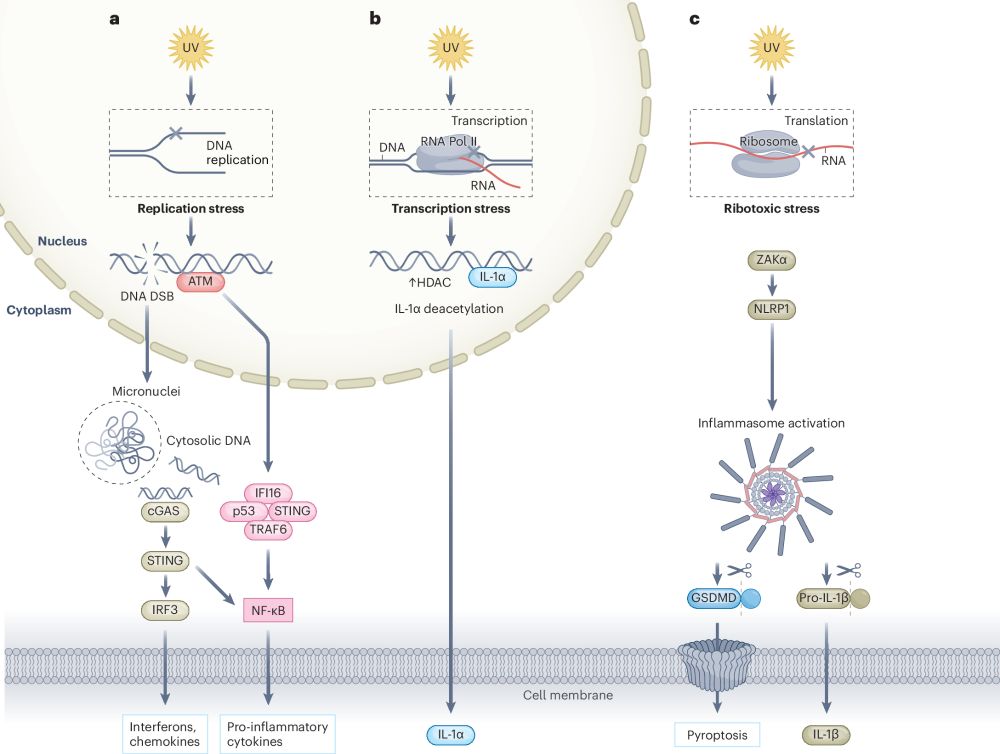
Transcription stress causes an inflammatory response via release of IL-1α
Nature Structural & Molecular Biology - DNA damage can be sensed as a danger signal by the innate immune system. Bournique et al. show that the transcription stress caused by DNA lesions can...
rdcu.be
Reposted by Kumar Somyajit & Lab
Reposted by Kumar Somyajit & Lab
Reposted by Kumar Somyajit & Lab



